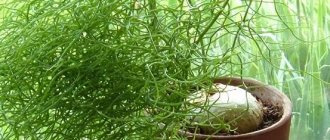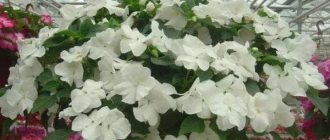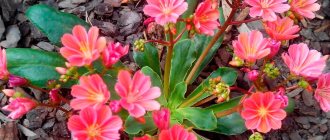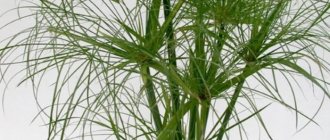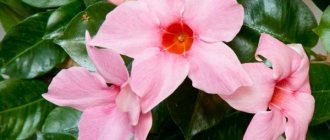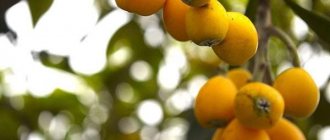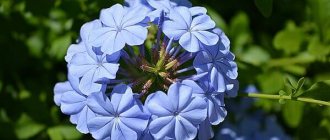Those who like to grow exotic flowers at home are not so rare, but they do not always know what a houseplant of Arabica coffee may require. It seems that coffee is difficult to care for, whimsical and requires increased attention.
However, the eyes are afraid, but the hands are doing: even a novice gardener can grow a coffee tree on a windowsill.
Description
Africa and Asia are considered the birthplace of Arabica coffee, although today this perennial evergreen shrub is grown everywhere in homes, and where the climate allows, even outdoors.
The plant belongs to the Madder family and has about 40 varieties . Under natural conditions it can grow into a bush of decent size, but when grown indoors its size is small (about a meter).
Flower growers especially value Arabica for its short flowering time - only 2-3 days, but can last from April to October, although only mature plants over 4 years old bloom.
After flowering, bright burgundy or red berries appear on the bush, each of them contains 2 coffee beans. The home plant produces about half a kilogram of aromatic grains .
The benefits and harms of coffee
Coffee is a wonderful, invigorating drink. It’s wonderful to wake up in the morning and feel its enchanting aroma.
What harm is there from coffee?
The debate about whether there is more benefit or harm in coffee has been going on ever since people learned about it. Some prove that coffee excites, increases muscle tone, stimulates physical activity, clarifies thoughts, and improves mood. And this list goes on and on.
Opponents of coffee claim that it increases blood pressure and cholesterol. However, it has been proven that if you pass the brewed drink through a paper filter or napkin, coffee becomes safe. A paper filter removes kahweol and cafestol from the drink, substances that increase cholesterol levels in the blood. Whether coffee is harmful or healthy is up to everyone to decide for themselves.
Important! If you decide to brew a cup of coffee from grown beans, remember that it will be much stronger and there will be more caffeine in such a drink.
As for the coffee tree in your home, we can safely say that it will only benefit you.
What are the benefits of coffee?
The plant cleanses the air well and saturates it with oxygen. Its beautiful appearance lifts your spirits, and by inhaling the aroma of flowers you can practice aromatherapy.
Beneficial features
Even those who never drink coffee have heard about coffee beans. The main value of the plant is the seeds, from which a tonic drink is brewed and used in making baked goods and desserts . But don’t forget about the aesthetic qualities of coffee.
The bush blooms beautifully, its small corollas resemble jasmine, and smell pleasant. Unfading emerald green has a light, pleasant scent, which is clearly felt if you rub the leaf between your fingers .
Features of growing at home
To successfully grow Arabica at home you will need:
- Good lighting for at least 10–12 hours a day. If there is not enough sunlight, you need to install phytolamps.
- The air temperature is about 25 °C in summer and 15 °C in winter.
- High air humidity - at least 70%.
- Eliminate drafts. Sudden temperature fluctuations are unacceptable.
- Choose nutritious, loose soil.
- It is not worth replanting Arabica beans often, but once every 3-4 years the pot needs to be changed to a larger one.
- Periodically apply organic fertilizers, alternating them with mineral complexes.
- Follow the watering schedule.
Growing
The coffee tree is propagated by seeds and cuttings. If you can get them, then you can grow your own tree.
Cuttings
Semi-lignified shoots (preferably their tips) with three to four buds can be used as cuttings. An oblique cut is made under the lower bud, moving 2 cm away from it. The lower leaves are removed, a couple of the upper ones can be left. The cutting is deepened 2 cm into a wet mixture of sand and peat. You can use some kind of stimulator for root formation and growth. It would be good to build a greenhouse over the planted cuttings, covering it with a bag or part of a transparent plastic bottle. It is placed in a bright place where the air temperature is kept between +20 – + 24 degrees.
Caring for the cuttings involves watering and airing. After a few months, you can see the appearance of new shoots. When 3-4 leaves grow on the new shoots, the plant can already be transplanted into a pot; it is better to take it immediately deep, organize a thick drainage layer so that the root system can develop to its satisfaction.
Seeds
The germination of seeds is determined by their freshness. If you take a ripe berry from a branch, remove the seeds from it and plant it, they will most likely germinate. And the longer they are stored, the less likely it is to sprout.
The seeds are buried 2 cm in damp sand, covered with glass (or a transparent bag) on top, and placed in a bright, warm place. The seeds have a very strong shell, to make it easier for the sprouts, the grains are cut or treated with special means.
In about a month (the soil needs to be moistened all the time), the first shoots will appear, and the plants can be transplanted into separate pots after 10 months, when the roots have sufficiently developed and become stronger.
Popular varieties of homemade coffee tree
Different varieties of coffee are grown in the apartment. The most popular are some varieties of Arabica and 5 other varieties.
Arabian coffee tree
An evergreen tree with a maximum growth rate of 4 meters, there are dwarf varieties. Suitable for home cultivation . It has high decorative qualities and beautiful flowering.
The dense crown is formed by large (up to 15 cm) elongated leathery dark green leaves. The flowers are collected in inflorescences, have 5 petals, and resemble jasmine.
Congolese
A tall evergreen shrub grows up to 10 meters in the wild. It is distinguished by a superficial root system and, with strong shading, begins to branch almost close to the ground.
It blooms at the age of about 3 years, bears fruit abundantly (the yield is higher than that of Arabica).
Nana (dwarf coffee)
The bush is compact, about 85 cm, easy to shape. It blooms and bears fruit abundantly. Unpretentious, suitable for home growing.
Liberian coffee
The plant's homeland is considered to be Central and Western Africa (from Liberia to Uganda and Angola). Without pruning, a tree can grow to a height of 20 meters , but with selective cultivation, the bushes are pruned at a height of one and a half meters.
The crown is dense, formed by opposing oblong large leaves of rich green color. Blooms profusely; its inflorescences are somewhat larger than those of other varieties and are distinguished by a pronounced jasmine aroma.
Excelsa
Scientists discovered this type of coffee relatively recently - in 1903 on the coast of Lake Chad (Central Africa). Initially, Excelsa was identified as a separate variety, but since 2006 it has been classified as a variety of Liberica .
It is distinguished from liberica by wider and thinner leaf blades with a smooth edge. The corollas are just as large, but have a characteristic spicy note in the aroma. The grains are small, almond-shaped.
Coffee transplant
When the root system completely fills the flowerpot, it’s time to replant the plant. Staying in one pot for a long time inhibits its growth and impairs flowering and fruiting. The coffee tree is replanted annually until it reaches 3 years of age, and after that every 3-5 years.
The pot for replanting should be approximately 5 cm larger than the previous container. Transplantation can be carried out both after the berry harvest and before the flowering phase begins. The plant is transplanted together with a lump of earth.
How to replant a coffee tree at home:
- clean the roots of the tree from rotten and dry shoots;
- add a layer of drainage to the bottom of the pot - broken apricot kernels, nut shells, clay shards or expanded clay;
- add 2 cm of coarse river sand and nutrient substrate on top;
- lower the root of the plant with a lump of earth into the flowerpot so that the root collar is raised 1 cm above the ground level.
Water the transplanted coffee tree with warm, settled or melted water. After 2-4 days, the top layer of the soil mixture can be slightly loosened to maintain moisture balance and better oxygen supply.
Home care
Arabica does not require specific conditions for maintaining a home, but there are still a number of features that need to be taken into account.
We bought a coffee tree seedling: what to do?
In order for the coffee to start growing, you need to transplant the seedling from the shipping container . Many times, flower growers have spoken negatively about the quality of the substrate that is used to fill pots for transporting plants.
Often the soil is oversaturated with microelements so that the bushes have a “marketable” appearance. This is not bad for sale, but such soil is not suitable for further cultivation.
Temperature
Provide the plant with proper temperature conditions without drafts or sudden changes. It is optimal to maintain air temperatures from 22 to 30 °C in summer , and from 12 to 16 °C in winter .
Spraying
In summer, when the air temperature is high, Arabica may lack moisture, so the plant needs to be sprayed regularly . It is better to take settled water at room temperature.
Once a month, it is recommended to add wood ash to prevent disease . In winter, if the coffee is not standing close to the radiator, it is better to stop spraying.
Lighting
The plant is photophilous, but at home does not require direct sunlight . A bright diffused light flux is quite suitable.
The length of daylight is more important: it should be at least 10 hours. If there is not enough natural light, the bush will need to be illuminated using phytolamps.
View this post on Instagram
Post by Citrus
